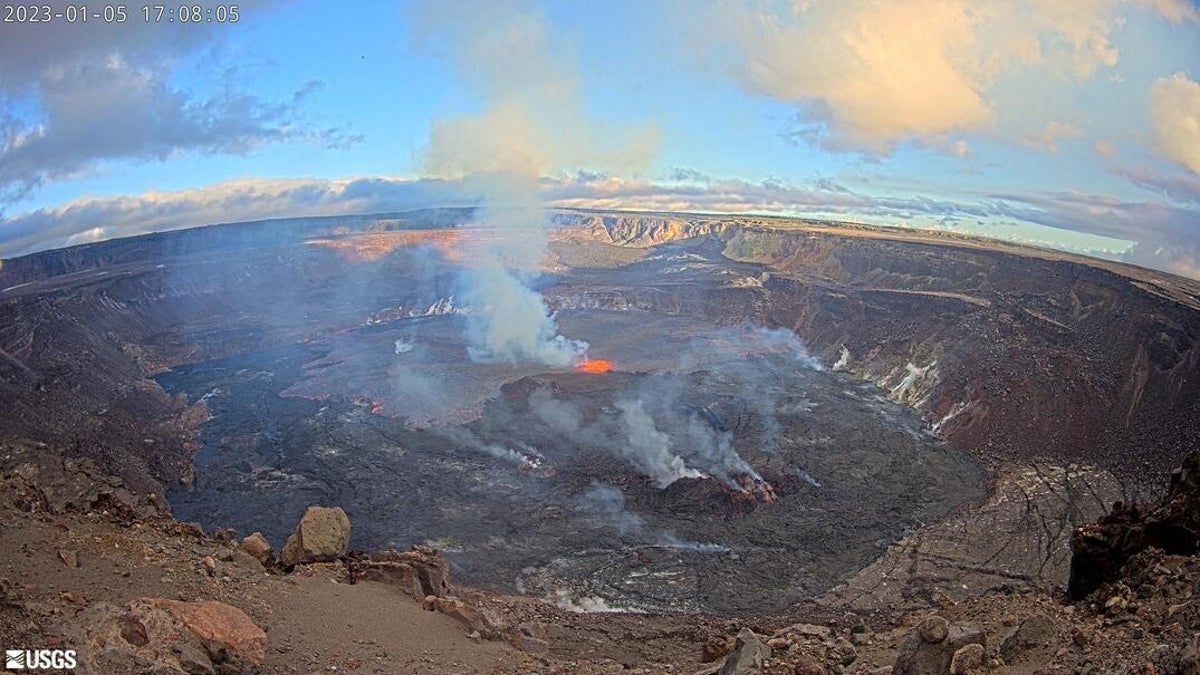
Hawaii's Kilauea volcano began erupting on Thursday after a nearly month-long lull in volcanic activity.
The Hawaiian Volcano Observatory detected a glow in webcam images indicating the volcano has begun erupting inside Halemaumau crater at the summit caldera. The eruption began at 4.30pm local time, it said.
The alert level has been raised to a warning and its aviation colour code to “red”.
The US Geological Survey (USGS) earlier raised the alert level for Kilauea due to signs that magma was moving below the summit surface, indicating that the volcano might erupt. It said there were more earthquakes and changes in ground deformation patterns – indications that magma was moving.
Webcam images shared by the authorities showed fissures at the base of the crater producing a lava flow on the surface.
According to officials, Kilauea’s summit is confined inside Hawaii Volcanoes National Park and does not pose a threat to residential communities.
“The opening phases of eruptions are dynamic,” the USGS said. “The activity is confined to Halemaumau and the hazards will be reassessed as the eruption progresses.”
Kilauea is one of the world’s most active volcanoes, which last erupted for 16 months starting September 2021.
In November last year, Mauna Loa erupted for the first time in 38 years as Hawaii witnessed two active volcanos spewing lava side by side. The spectacle drew onlookers and set some nerves on edge among people who’ve lived through past eruptions.
Both volcanos stropped erupting at the same time in December.
Kilauea’s last eruption reportedly produced more than 29 billion gallons of lava into the summit’s crater, raising the floor by nearly 470 feet.
A Kilauea explosion in 2018 destroyed more than 700 residences.






